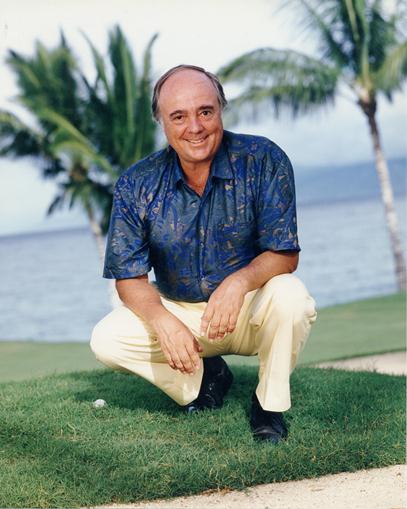
One of the most prolific designers in the history of golf course architecture, Robert Trent Jones II has in recent years championed the environment and affordable public golf.
Few golf course architecture firms have as much global presence and notoriety as that of Robert Trent Jones II, whose most famous works include Spanish Bay at Pebble Beach, Washington’s upcoming US Open venue Chambers Bay, and several hundred others in more than 40 countries.
Jones, Jr. has never been anything less than brutally outspoken, and three years ago he issued his company’s Green Proclamation, a commitment to design golf courses in an environmentally responsible manner. At the same time he called on his peers to likewise dedicate themselves to these environmental tenets.
For 2012, Jones is back at the podium, and just has released a “Public Golf Proclamation,” comprised of ten tenets to support accessible and affordable public golf and bring our beloved game to more people in more places worldwide.
This proclamation follows on the heels of a recent letter to the New York Times, in which Jones, Jr. wrote, “Golf architects are often called upon to design courses that support upscale real estate developments. But the game’s roots reach down into the Earth, not up into trophy homes. Golf first developed 500 years ago as an accessible and affordable sport that brought people together outdoors, rather than separating them. Many great golf courses serve the public and the environment. The future of our sport lies in embracing the Scottish tradition in which all people are equal as they stand over a white ball.”
Without further ado, here is the test of the company’s proclamation and 10 tenets:
PUBLIC GOLF PROCLAMATION
Our Exclusive Commitment to Inclusiveness
From its earliest origins along the coasts of Scotland golf has fostered community, bringing together disparate peoples to enjoy both competition and camaraderie. In the modern era, golf courses throughout the world have been very successful when created in conjunction with resort and real estate developments and private clubs. At Robert Trent Jones II we will continue to design the best possible courses to meet the needs of our many and varied clients. But we believe that golf should also be easily affordable and accessible to everyone who wishes to play it.
As our founder, Robert Trent Jones, Jr., stated in a letter to the New York Times, “The future of our sport lies in embracing the Scottish tradition in which all people are equal as they stand over the ball.”
We applaud the global efforts of golf organizations, associations, and governing bodies, as well as our golf architecture colleagues worldwide, who have worked to promote public access to affordable, high-quality, environmentally responsible golf. In an effort to foster the communal spirit of the game we offer the following declaration to golfers and prospective golfers of every nation:
We aspire to:
1. Work with municipalities and other government entities to create great golf courses for their citizens through insightful, integrated master plans specific to each community.
2. Assist communities in creating programs and initiatives that make great public courses accessible and affordable to everyone.
3. Advocate for the creation of golf facilities on degraded sites to return unproductive land to productive and sustainable public uses.
4. Always protect and enhance the environment for the good of all.
5. Design courses that require less earth moving, water, fertilizer, and other resources in an effort to keep investment and operating costs—and therefore green fees—reasonable.
6. Create wider strategic routings and sets of shorter “family tees” to encourage children to take up golf and have fun playing it.
7. Advocate for innovative practice facilities where young people and newcomers can learn to love golf, and support programs and organizations that introduce new players to the sport.
8. Design facilities that encourage speed of play, including inventive layouts such as “Learning Courses,” par-three routings, 6-, 9-, and 12-hole loops, and others.
9. Create public courses that are flexible, fun, and challenging to golfers of a wide range of abilities.
10. Encourage golf course owners to support local businesses and take an active role in their communities.
